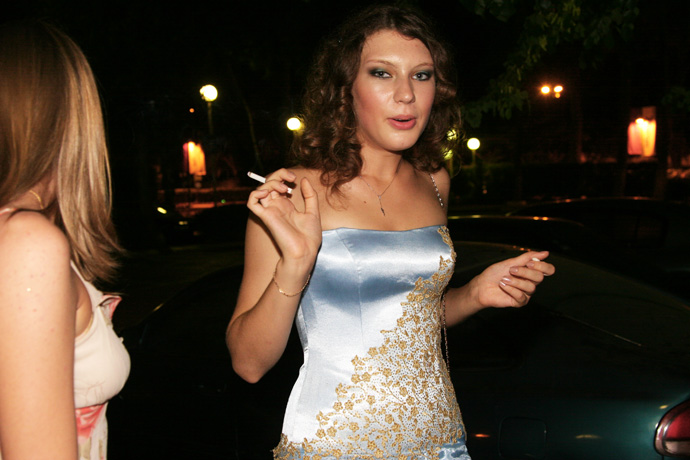Text by curator : Maayan Amir, 2008
The Perfomance
Perfomance, as perceived by society today, has cumulated elements of redemption-itoffers the possibility of being beautiful, sexual, of becoming a star, of being one of a kind.The subjects in the photographs are all busy performing. Performance is the cohesive glue that binds them together, it arranges space, it regulates distances. The performance is responsible of keeping the order.
The photographs also present the movement of performance – motions of control, tension, tyranny. Movement that is not inherent in the bodies that manifest it. Aspiring towards imaged – it takes over the body, it barters self.
The Gaze
The performance governs within the exhibition. The french theoretician Jackes Lacan clamed that self awareness is formed during the ‘mirror stage'(between 6 and18 months)…
Using this same Lacanian logic, the subject in the exhibition seem to recognize their own reflection only when it is presented to them through the camera lens: Self appears as a promise of control only when there is a promise of being photographed. The subsequent disintergration allows the camera to rearrange reality for just a moment as the camera has the power to determine new hierarchies, to create a new center. Inherent within
this desire to appear before the camera, to become a photograph, is the desire to become an object and as such also become a tradable commodity . As a result the relationshio that is formed between gaze and photographed objects is a barter relationship.
The photographed subjects are familiar with this intense longing for image-both as something demanded by the environment and also as a personal need-and so the photographs establish a new sey of rules: The subjects of the photographs are engrossed in measuring the image, in smoothing it out, making it seamless.
Photography
…and now Hassid-Segal photographs reflect on this “post-victory” reality, where it seems that everybody has the opportunity to perform.
The photographs seek to draw out the aesthetic of performance, to illuminate its shadowed moments. Hassid-Segal draws closer to the accepted setup of performance photography and then tetreats from it. But rather than showcasing the performance she chooses to focus on the interplay of gazes that establish stardom, the fine line between “making it” and being diminshed to a pawn following rules dictated from above.
Photography, which has always played the delicate balance between worthy values of humanism and the call to arms for human rights, and between violence and exploitation, has always struggled against the convenient confinements of accepted definitions. These works suggests we rethink these many gray areas of star-gazing mechanistic photography.
Hassid-Segal has stopped in her tracks in order to see, turning her camera to view this mutal dependence, this attraction. She suggests we turn the light back on, if just for a moment, even though the show is already well on its way.






